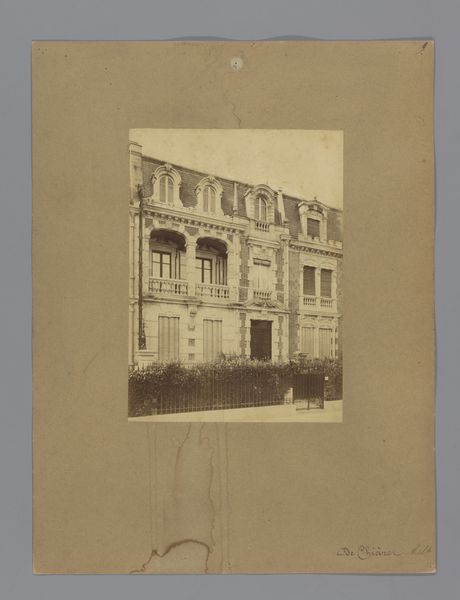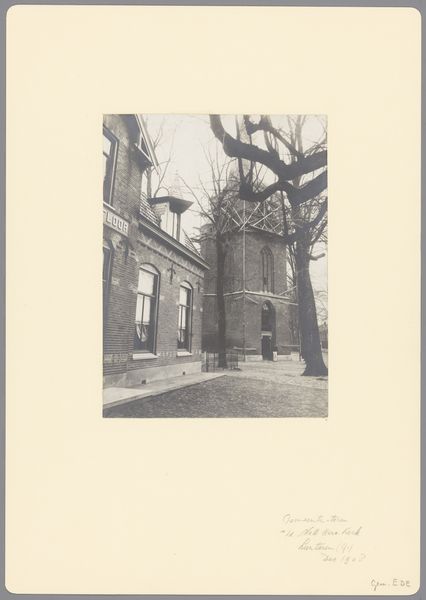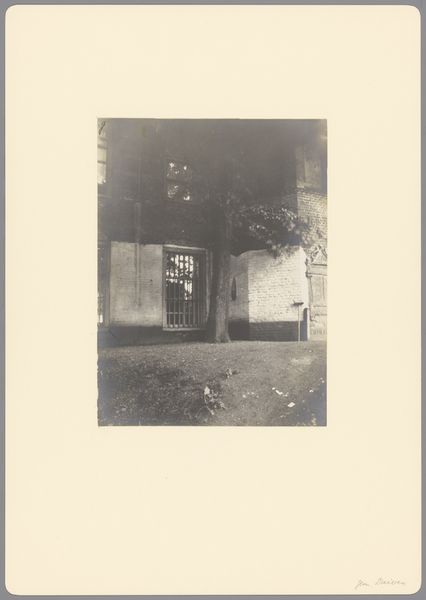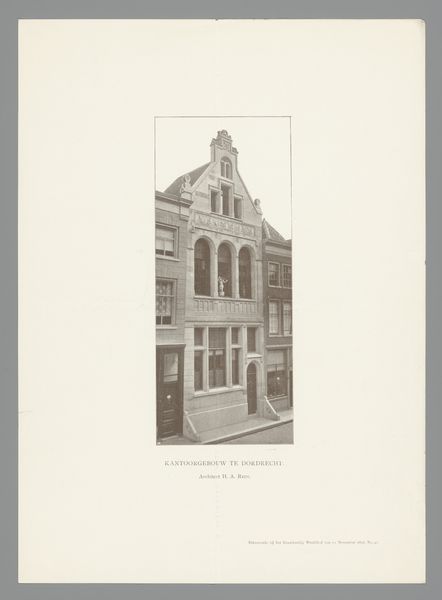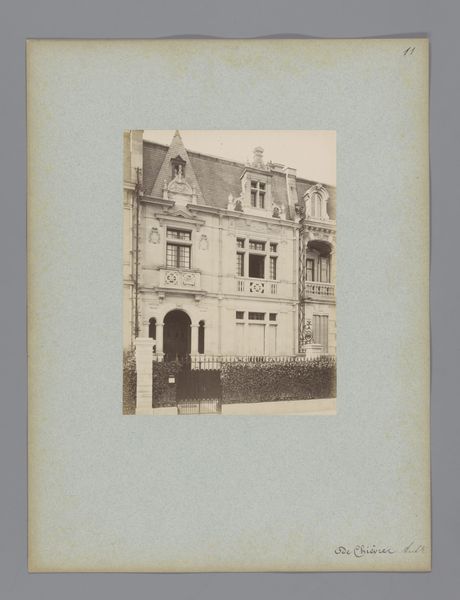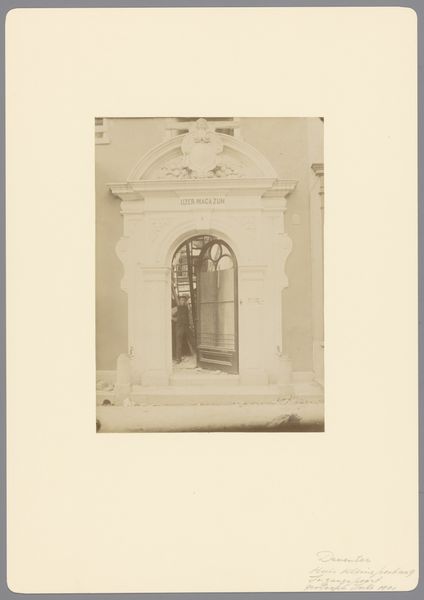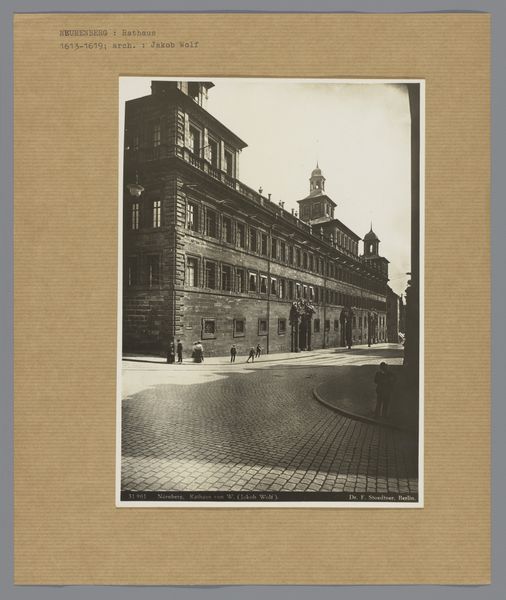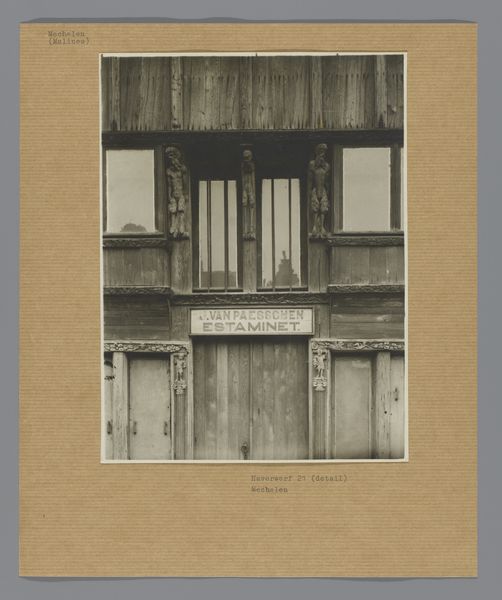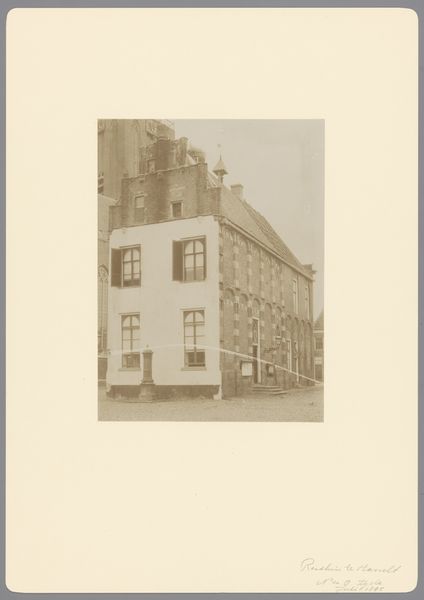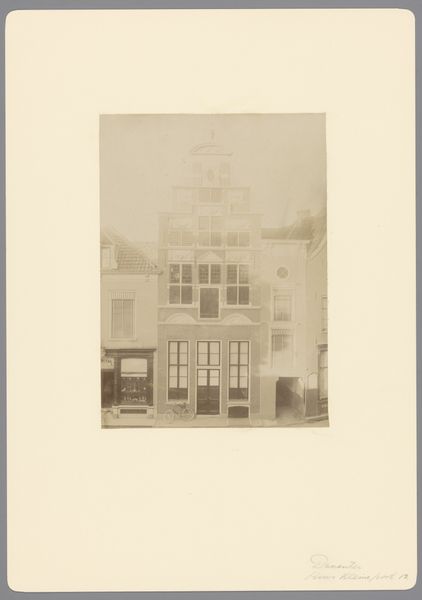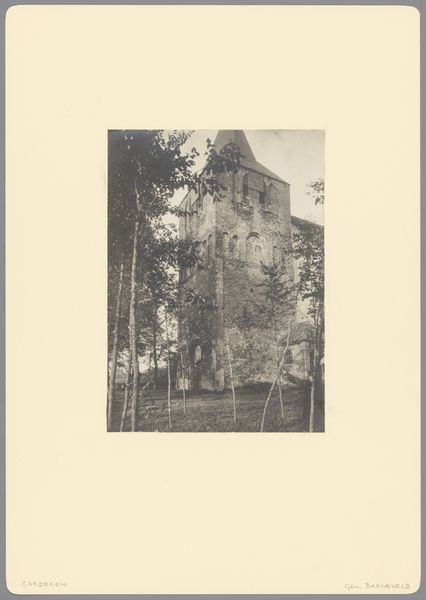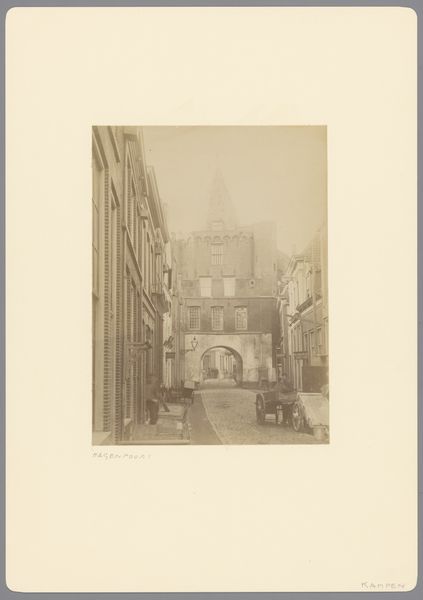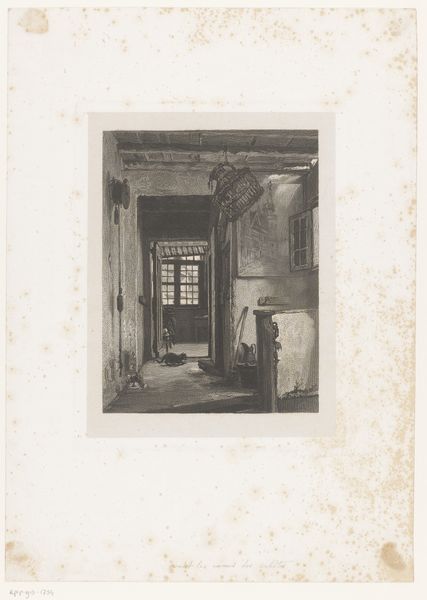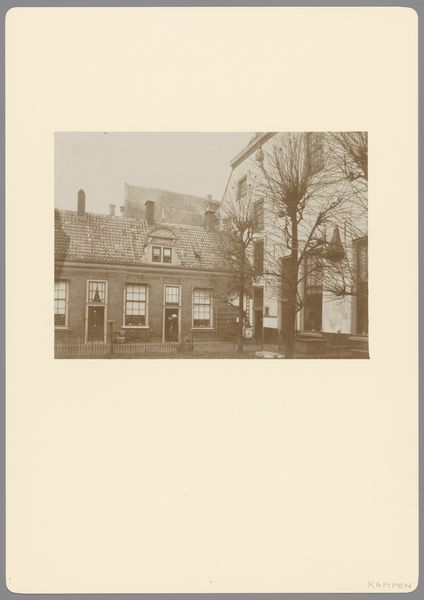
photography
#
photography
#
cityscape
#
realism
Dimensions: height 180 mm, width 130 mm, height 300 mm, width 250 mm
Copyright: Rijks Museum: Open Domain
Curator: Here we have "Liege. Rue du pot d'Or", a photograph dating from around 1880 to 1930, produced by Folkwang Auriga Verlag. The image presents a slice of urban life with a focus on architectural details. Editor: Ah, a melancholic whisper of old-world charm! I'm immediately drawn to the muted tones, that sepia wash lends it such a wonderfully ghostly presence, don't you think? It’s almost as though the stones themselves are exhaling a forgotten sigh. Curator: Indeed. It is a realist portrayal, likely aimed to document and, by extension, authenticate, everyday experience through accessible means. The texture of the brickwork, the precise alignment of the shutters… all indicate a very meticulous approach to photographic production. The "Rue du pot d'Or"—the street sign itself suggests a level of social history to be decoded through commercial activity. Editor: Exactly! And consider the frame within the frame; we gaze into a world slightly faded, much like memory itself. The shadowed doorway seems to promise secrets or perhaps just shelter. Is there also perhaps a slightly oppressive feeling, with the door shut like that? Curator: Oppressive? Well, one might also read the symmetry and balance within the composition, the interplay between light and shadow, to speak to something very different – order. This attention to capturing the material world, of bricks, mortar, wood, speaks to the increasing availability and deployment of photography in capturing and studying city life during this era. Editor: Perhaps it's simply a question of time intervening, as we layer our interpretation onto what the image really is. But the real charm lives in its understated mystery and age-softened beauty, and what our memory now brings to it. Curator: True. When we engage with the photograph, we're equally implicated in constructing and activating what the photographic object *means*. The history isn’t just in the built environment that the lens is pointing to, but about our understanding of materiality and labor, as that’s evolved from when this photograph was made until the moment when each visitor looks at it. Editor: A perfectly ghostly intersection of past, present, and how we weave it together. I shall wander off to dream up a forgotten narrative of who lived within those walls…
Comments
No comments
Be the first to comment and join the conversation on the ultimate creative platform.
